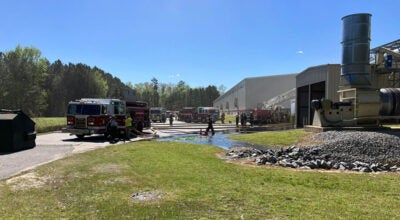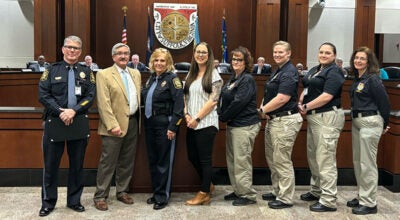‘Flush’ water in closed buildings before reopening
Published 9:51 pm Tuesday, May 19, 2020
|
Getting your Trinity Audio player ready...
|
Directors of Hampton Roads’ water utilities and health department officials advise business owners and operators who closed buildings due to COVID-19 to thoroughly flush their establishment’s plumbing systems before reopening.
“Drinking water systems are designed to support the continuous delivery of safe water. When buildings go unused, so too does the water sitting in pipes,” said Dan Horne, field director at the Virginia Department of Health’s Office of Drinking Water. “To make sure drinking water systems are at safe levels of disinfection before employees return to work, it’s important that all of the water in the building be flushed out and replaced with fresh water from the water utility system.”
These practices are recommended for schools, daycares, lodging, offices, places of worship, event venues, retail, libraries, museums, restaurants, gyms, health care and other facilities that have remained closed during the COVID-19 shutdown.
When water is not used, the disinfectant in the water dissipates over time. Without chlorinated water flowing through the pipes for an extended period, microorganisms can grow in water pipes, fixtures and tanks. Prolonged water stagnation also can diminish the normal, protective scale on interior pipe walls. Without the protective scale, metal from the piping may dissolve into the water.
During the flushing process, stagnant, existing water is replaced with fresh water, which has been continually treated and monitored by the region’s water utilities throughout the pandemic.
To flush water systems in closed buildings, Hampton Roads utility directors advise owners and property managers to follow these steps:
Flush cold water first.
- Remove aerators and screens from all faucets. Then, turn on the cold water and open all cold water outlet valves, such as faucets (bathroom, kitchen and laundry) and bath tubs and showers. Outlets should be turned on to full open.
- Start with the outlets on the lowest floor, then move to the second floor, and then higher floors in order.
- All cold water outlets should be flowing at the same time during flushing.
- Flush toilets and urinals two or three times each, to purge any stagnant water and bring in fresh water.
- The outlets should run for at least 30 minutes. After this time has elapsed, turn off faucets and outlets in the same order as you opened them. Larger facilities will have more water stored in the pipes and tanks so it will take longer to flush the system.
For more details and guidance for large businesses, check with The Environmental Science, Policy, and Research Institute and the Centers for Disease Control and Prevention websites.
Flush hot water second.
Turn on the hot water and open all hot water outlets, in the same way as you opened the cold water outlets.
The hot water should run for 45 minutes for a residence or small business, to ensure that all water in the heater is flushed out.
After the time has elapsed, close the outlets in the same order as you opened them. Then, clean and replace all aerators and screens. Note: water heaters should be set to at least 120 degrees to prevent microorganisms from growing.
Another best practice, especially for schools and daycare facilities, is the removal and thorough cleaning of end-point devices such as drinking fountain filters.
According to Horne, “Residential customers and businesses that have continued operations during the pandemic with regular water usage can be assured their water remains safe. For businesses and commercial operations that will be returning to service in the future, this is a reminder to follow the recommended water quality protocols before reopening.”
Hampton Roads business owners and operators seeking additional guidance should contact their local water utility department or visit www.hrpdcva.gov/buildingflushing.





